Last Updated on January 23, 2024 by Marian Jones
The Parisian district of St Germain has so many highlights. It’s home to two of the city’s best-known churches, Saint-Sulpice and Saint-Germain-des-Prés. It has a political flavour because both the Assemblée Nationale and the Sénat are here and an academic feel because here you will find the Sorbonne, some of the big publishing houses and the Académie Française, proud guardian of the French language. This pot-pourri of an episode also includes Saint-Germain’s artistic inheritance, centring on two museums, which were formerly the homes of the Romantic painter Delacroix and the sculptor Rodin.
Some of the highlights of this area are treated in other episodes, for example the Musée d’Orsay (Episode 9), the Luxembourg Gardens (Episode 11) and the two ‘Hemingway cafés’, the Deux Magots and the Café de Flore (also Episode 11).
2 Beautiful churches
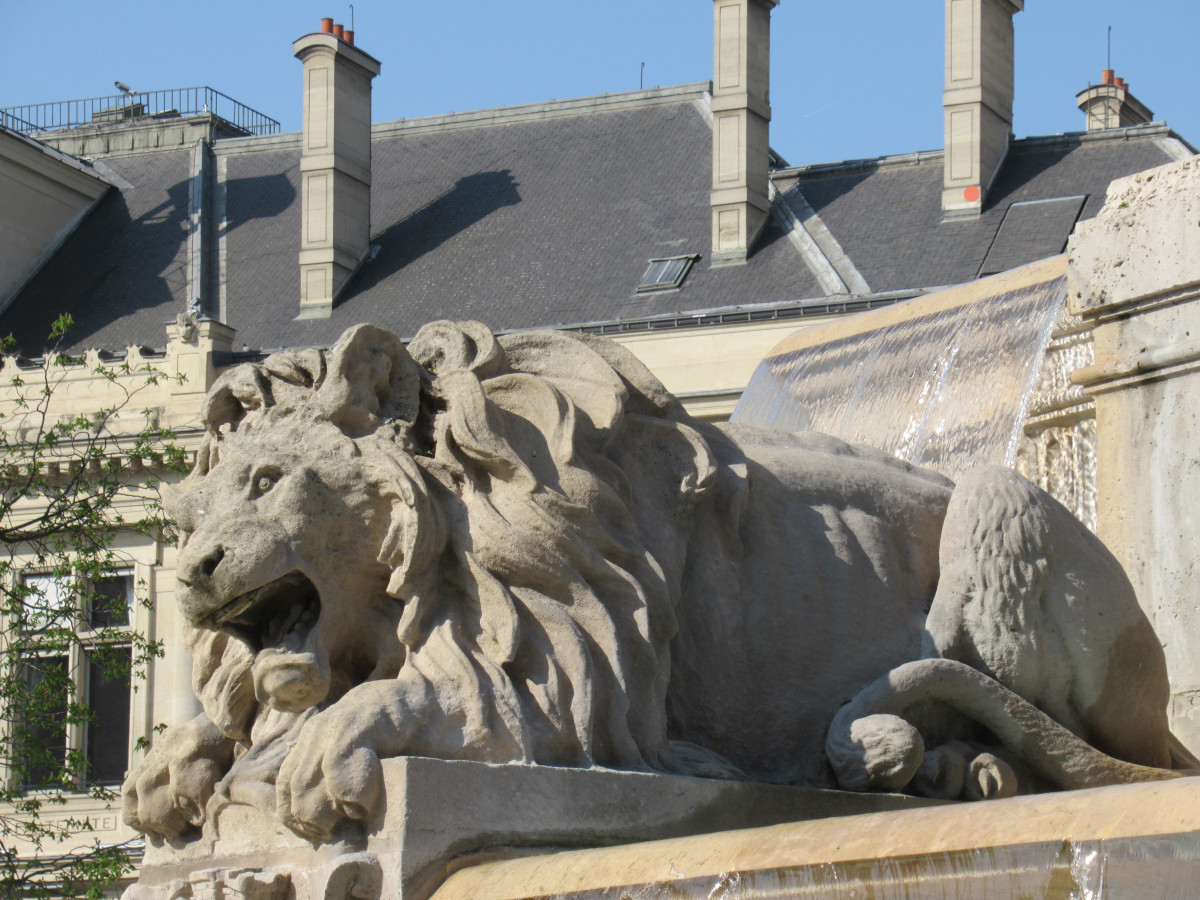
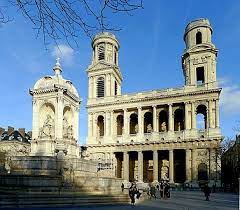
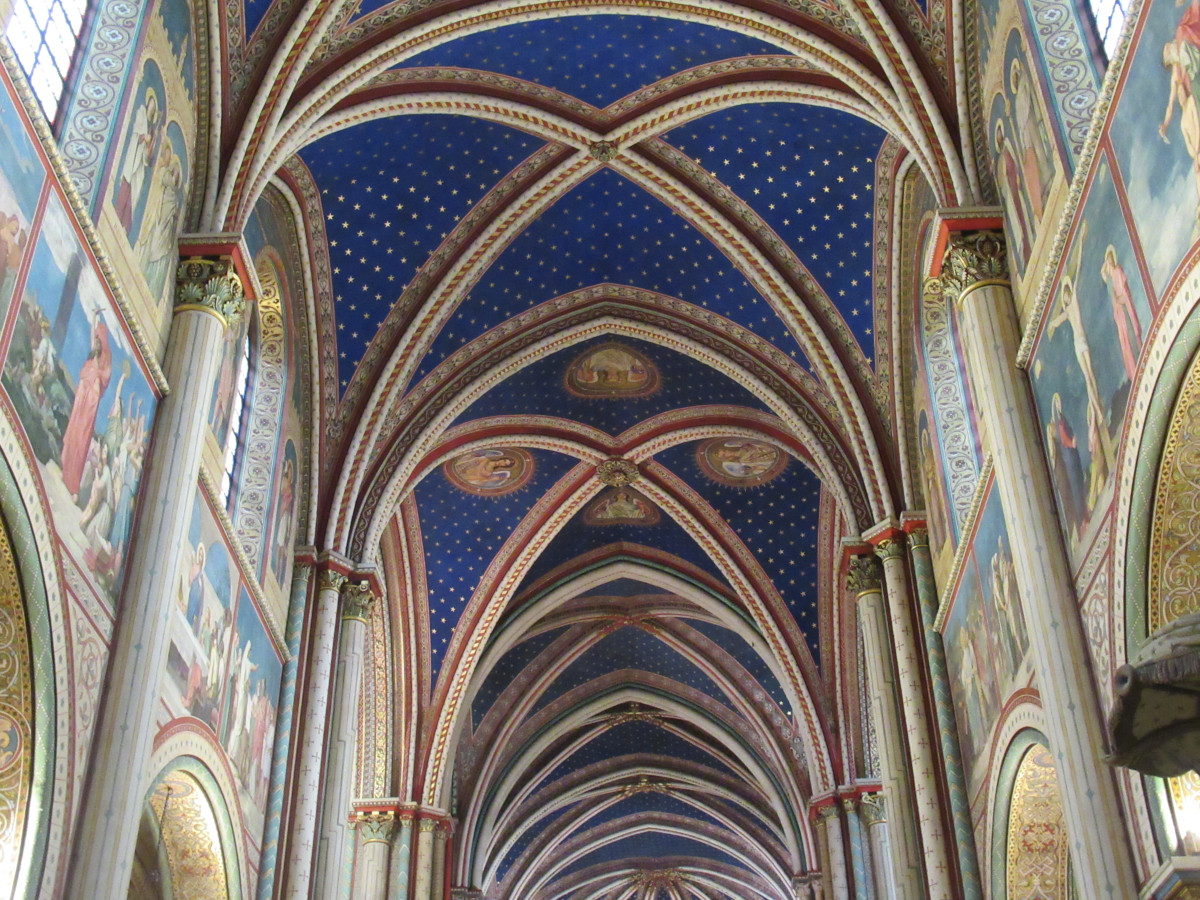
Saint-Sulpice is the 2nd largest church in the city, a real Paris establishment where Baudelaire was baptised and Victor Hugo got married. President Jacques Chirac’s funeral service was held here. Its 18th century organ is world-renowned and was once played by Mozart for Queen Marie Antoinette. Inside are 3 large murals by Delacroix and over the entrance is a defiant Christian message carved into the stone after the church was badly damaged in the revolution. In the centre of Saint-Sulpice Square is a beautiful fountain, guarded by large sculpted lions.
Saint-Germain-des-Prés is the oldest church still standing in Paris, originally a Benedictine monastery dating from the 6th century. What’s there today is an architectural mish-mash from various eras because it was renovated in the Middle Ages and in the 19th and 21st centuries. But it is – especially inside – utterly beautiful. Cool cream walls, stone arches, red, green and golden pillars and a deep blue ceiling covered in little gold stars. It hosts a programme of classical concerts. And it’s just across the road from two of the city’s most famous cafés: Les Deux Magots and the Café de Flore.
politics and academia

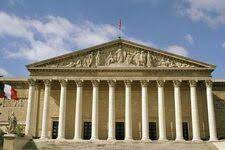
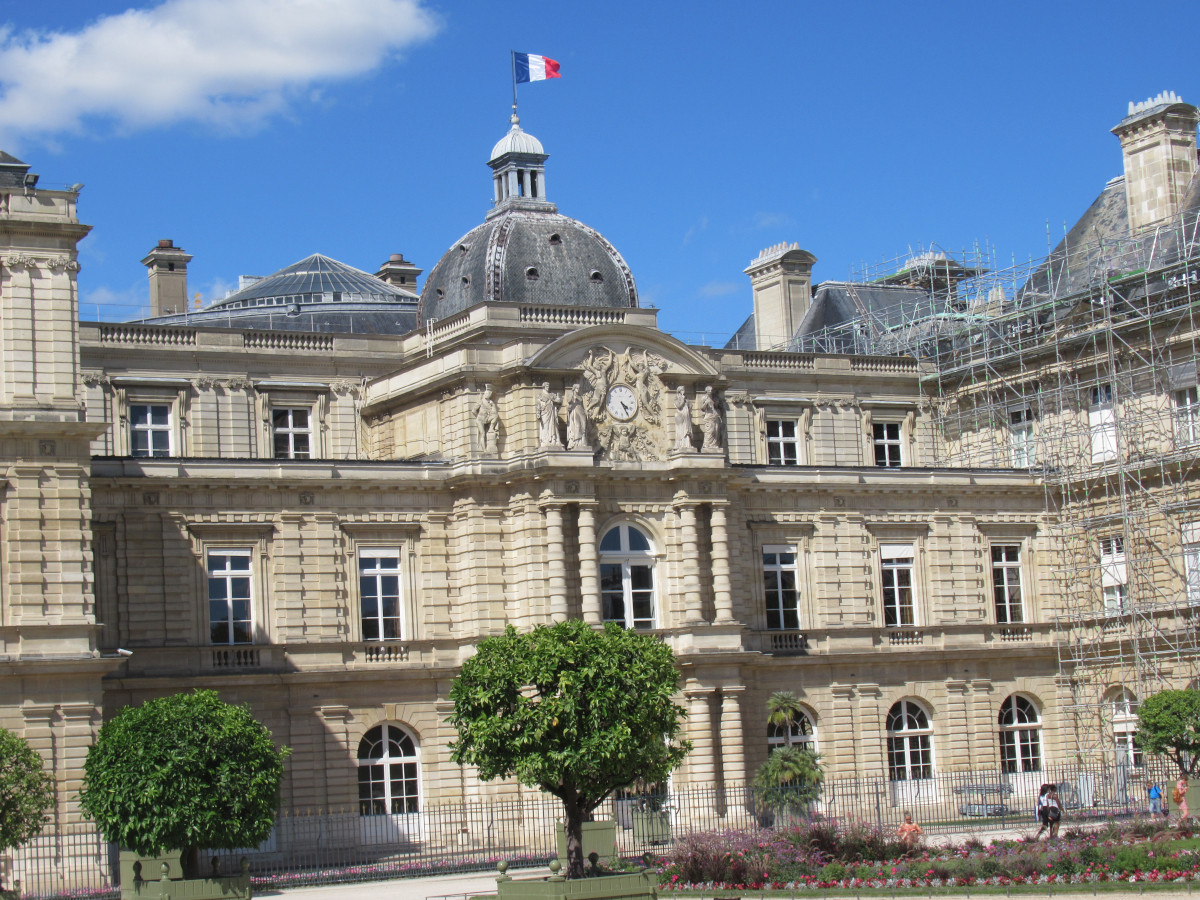
Both houses of the French Parliament are in this area. The lower house, the Assemblée Nationale, founded during the revolution – it first met at Versailles in 1789 – sits on the river bank, marked out by its classical columns and fluttering Tricolore. It was occupied by the Germans during World War II and liberated in August 1944 by Sub-Lieutenant Philippe de Gaulle, son of Général de Gaulle. The Upper Chamber, the Sénat, sits in the Palais du Luxembourg.
It’s fitting that the Académie Française should be in this intellectual area of Paris. It was founded in 1631 and the 40 members – writers and academics elected for life – see themselves as guardians of the French language. Known as the ‘Immortels’ – average age late 70s! – they publish a dictionary and make rulings on current language use in a (possibly doomed) struggle against slang and ‘franglais’. You can’t visit it, but you can go into the nearby Bibliothèque Mazarine, a stunningly beautiful library built by Louis XIV, which houses 200,000 16th and 17th century books. Think marble busts, chandeliers, leather-bound volumes and a hushed atmosphere.
2 art museums

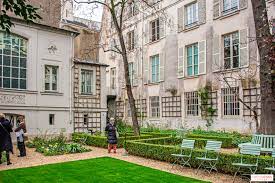
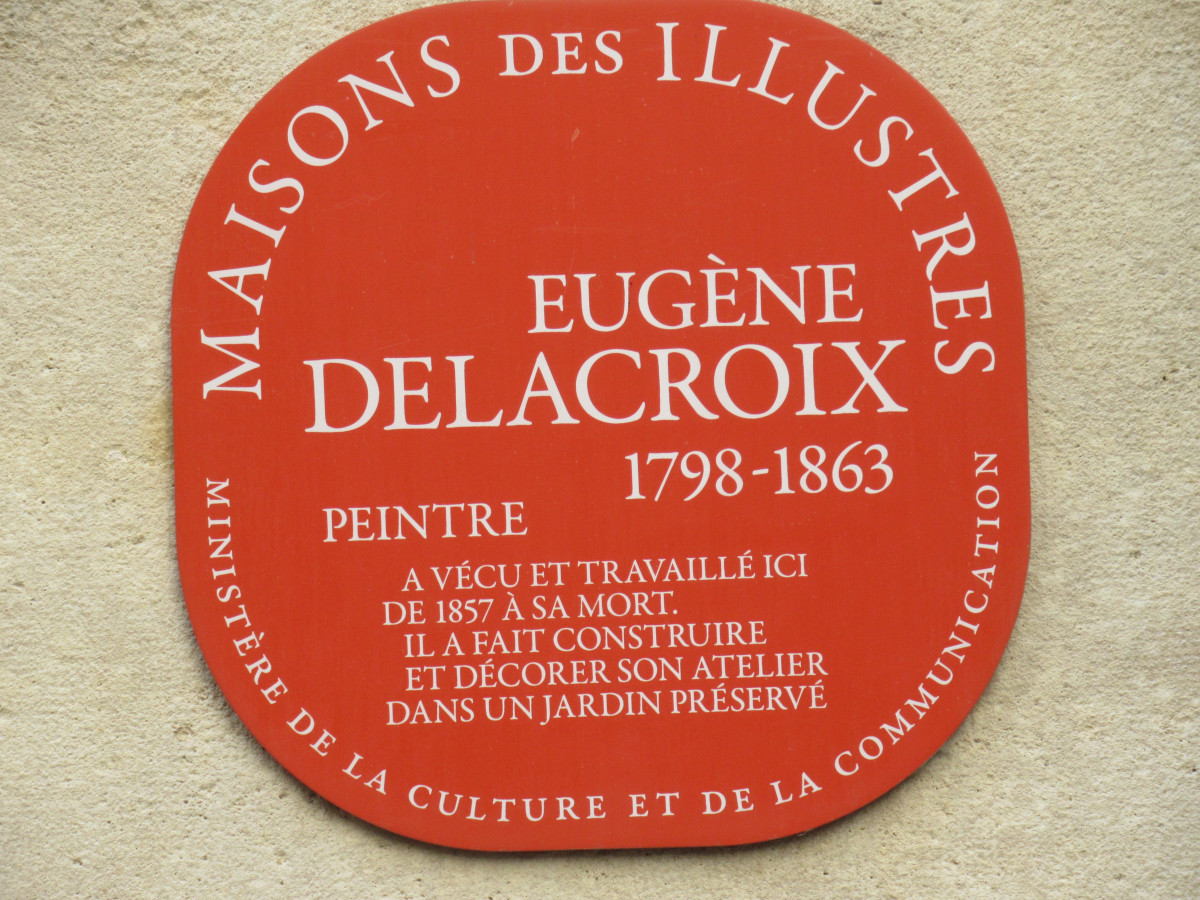
This is definitely one of the city’s ‘arty’ areas. The Pont des Arts has long been a place for painters to set up their easels and capture views of Notre Dame and the picturesque Pont Neuf. And there are two museums dedicated to the work of well-known painters: the Delacroix Museum and the Rodin Museum.
The Delacroix Museum
Eugène Delacroix (1798 – 1863) was the leading romantic painter of his day, known for his big, bold canvases filled with bright colours. Famous works of his include the murals at Saint-Sulpice church and the Apollo ceiling at the Louvre, which portrays Apollo slaying a python. His painting ‘Liberty leading the People’, is in the Louvre collection. It was painted to commemorate the 1830 July Revolution and Louis Philippe, who became king that year, pronounced it ‘so dangerous’ that it should be hidden away.
The Delacroix Museum is in the Place Fürstenberg, often called one of the city’s most beautiful squares. It’s the house where Delacroix lived and you can visit the inside, the garden room which he used as his studio and the pretty little courtyard garden. The writer Julien Green loved it here, describing it in as ‘this oasis in our century that is so wretchedly devoid of poetry.’
the Rodin museum
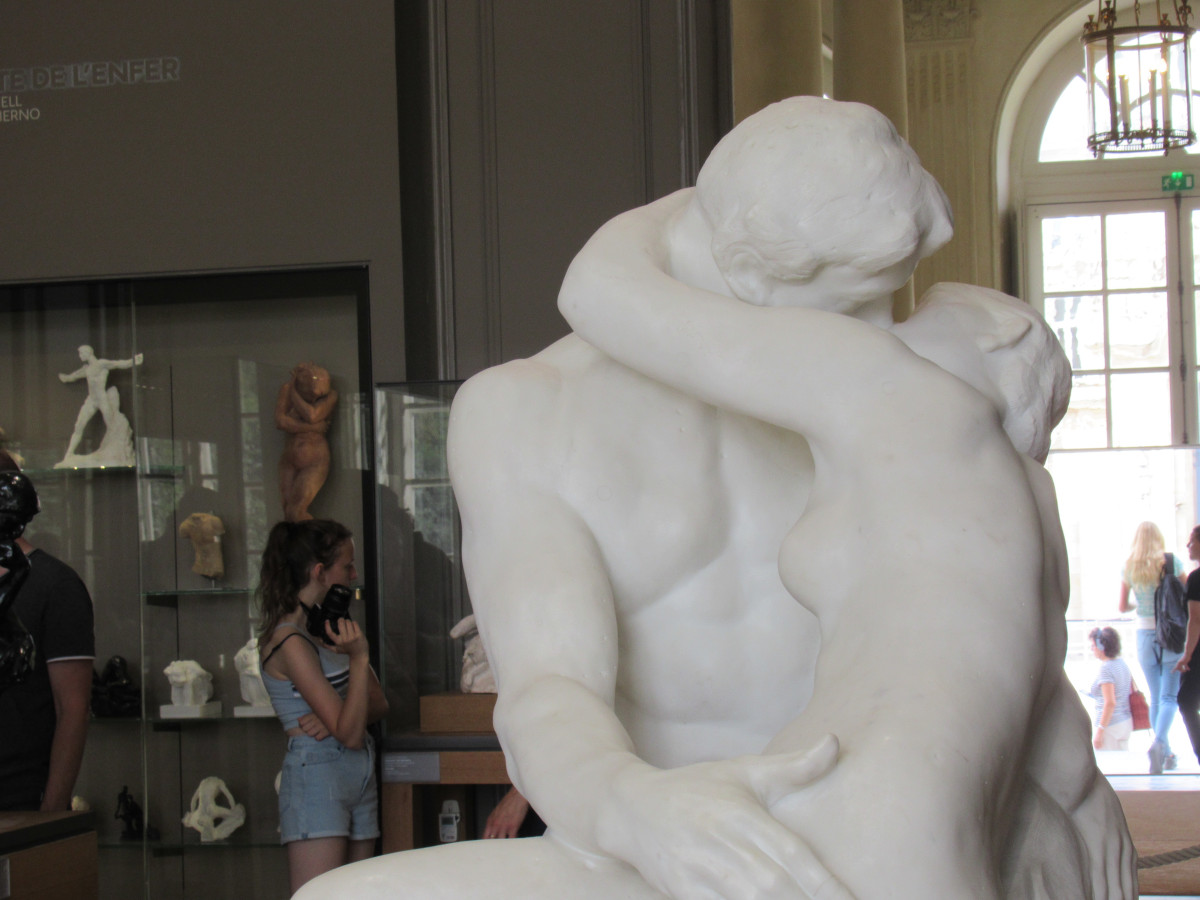
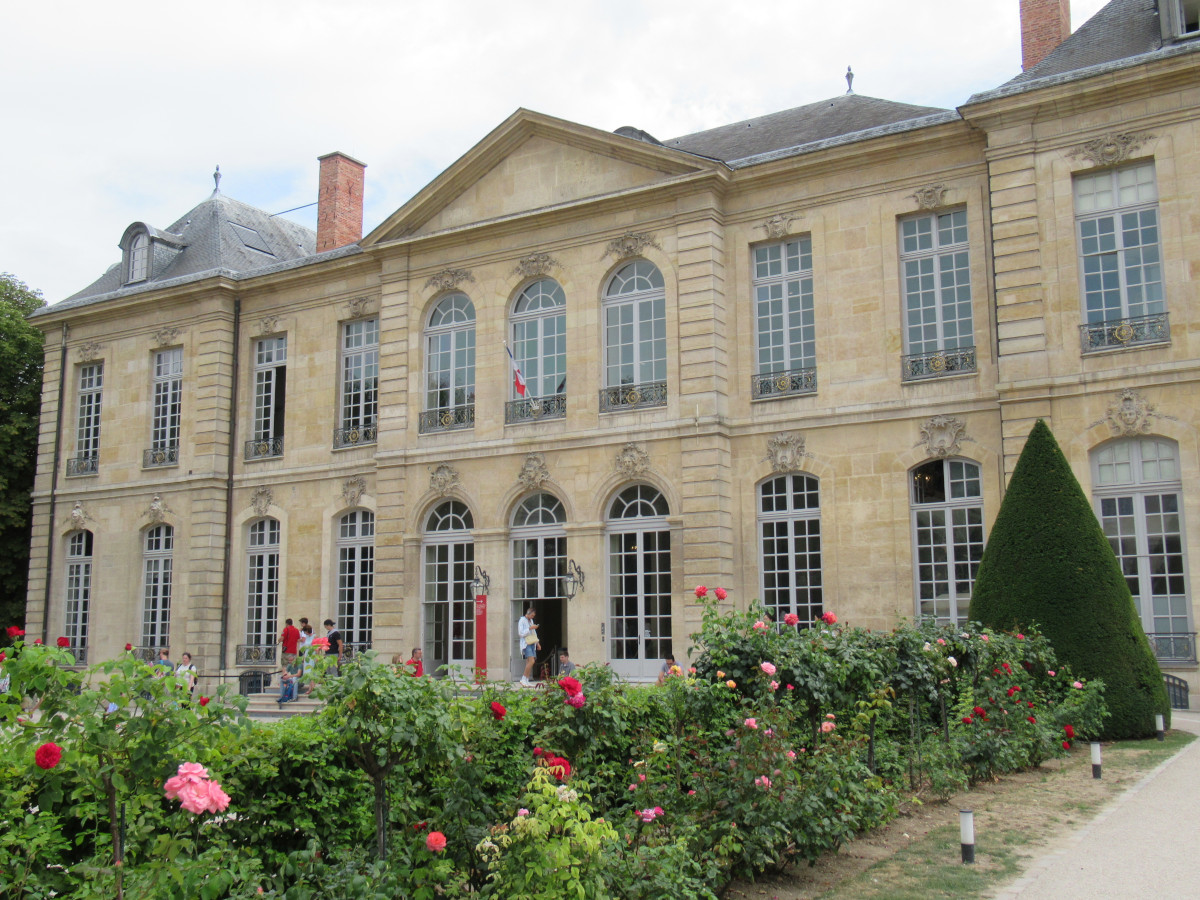

Again, this is the house where the sculptor Auguste Rodin (1840-1917) lived and worked. He left his works to the nation on the condition that they would be housed and displayed to the public here. It’s a beautiful 18th century house, and Rodin pieces are on show in a number of rooms inside and also in the pretty gardens. Inside, in addition to many sketches and smaller pieces, you can see ‘The Kiss’ and the pieces on show in the garden include The Burghers of Calais, which shows a dramatic moment at the end of the siege of Calais in 1346 and – his most famous piece – The Thinker.
Also inside is a room devoted to Camille Claudel, the sculptor who was Rodin’s student, then lover. Her ultimately tragic story is told on the podcast.
Listen to the POdcast
Reading suggestions
Eugène Delacroix by Maria Peitcheva
Delacroix A Biography by Tim Wilson-Smith
Auguste Rodin The Man, His Ideas, His Works by Camille Mauclair
links for this post
Delacroix Museum
Rodin Museum
Previous Episode The Seine and the Champs Élysées
Next Episode The Louvre





